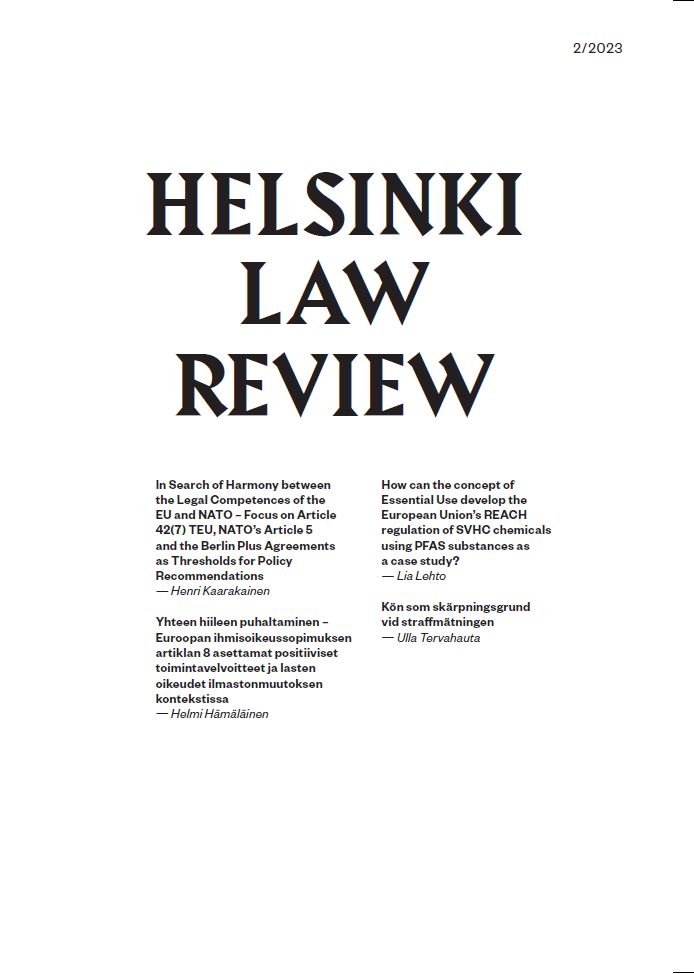In Search of Harmony between the Legal Mandates of the EU and NATO – Focus on Article 42(7) TEU, NATO’s Article 5 and the Berlin Plus Agreements
DOI:
https://doi.org/10.33344/vol17iss2pp10-38Keywords:
Euroopan unioni, Nato, turvallisuuspolitiikkaAbstract
Today’s geopolitical situation seems to give the EU and NATO many reasons to combine their forces. Following Russia’s unlawful attack against Ukraine in February 2022, both clubs of sovereign states have found themselves dealing with the same question; how to ensure security of the European continent against external aggressions? While this development is understandable and necessary, it sparks a need to thoroughly relook at the work distribution of these two organizations. While military defence is traditionally strongly linked with the core functions of NATO, it is evident that the EU has shown a keen interest in operating in this field as well. However, military defence is not the only intersection where the EU’s and NATO’s interests meet; in the past and present, both organizations have cooperated for example, in the field of crisis management. As legal scholars are always interested in finding coherence and normative ground for authorities’ actions, I wish to further disentangle the competences and relationship between these two legal entities in the field of security as well. What makes the relationship between the two organizations even more interesting is that they share a significant amount of member states: the commonly heard question is therefore whether both the EU’s and NATO’s interest in security results in troublesome duplications.
This dilemma in the nexus of the European Union and NATO is what inspires me to embark on this research journey. Therefore, my main research question is the following: Understanding that a significant majority of Member States of the European Union are also members of NATO, to what extent do these two organizations’ legal mandate to act within the field of security and defence overlap with each other? What could be possible ways to further promote the clarity between the EU’s and NATO’s legal competences in the field?



